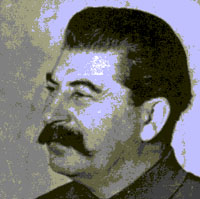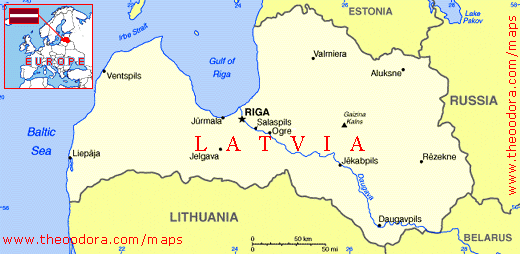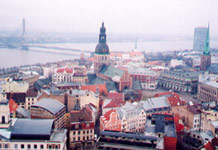
Assignment Chronology Books Websites Facts Assignment: How has the relationship between Latvia and Russia/USSR changed over the last seventy five years? The territory known today as Latvia has been inhabited since 9000 BC. In the first half of 2000 BC, the proto-Balts arrived. They became the forefathers of the Latvian people. At the beginning of this era the territory known today as Latvia became a famous trading crossroads. Across the European continent, Latvia's coast was known as a place for obtaining amber. Up to and into the Middle Ages amber was more valuable than gold in many places. Because of its strategic geographic location, Latvian territory was frequently invaded by neighboring nations. By the late 1100s, Latvia was increasingly visited by traders from western Europe who used Latvia's longest river, the Daugava, as a trade route to Russia. At the end of the 12th century, German traders arrived, bringing with them missionaries who attempted to convert the pagan Baltic and Finno-Ugrian tribes to the Christian faith. The Germans founded Riga in 1201, establishing it as the largest and most powerful city on the eastern coast of the Baltic Sea. The 1500s were a time of great changes for the inhabitants of Latvia, notable for reformation. After the so called Livonian War (1558-1583) today's Latvian territory, divided into regions, came under Polish-Lithuanian rule. In 1621, during the Polish-Swedish war (1600-1629) Riga came under Swedish rule and became the largest and most developed city in the Swedish Kingdom. At the beginning of 1700s, the Great Northern War broke out, as a result of the Russian Empire's desire to expand its territorial claims to the important land of Latvia. By the end of the 18th century, all of Latvia's territory was under Russian rule. At the end of the 1700s, industry developed quickly, bringing with it a major growth in population. Latvia became Russia's most developed province. At the beginning of the 1800s Latvians experienced a powerful "awakening" of national identity. The first newspapers in the Latvian language were printed, and cultural development took place. The end of 1800s marked a period of national rebirth and the most active members of the Latvian social and cultural life, so called "New Latvians" demanded the same rights longed enjoyed by other nations. Latvia's independence was proclaimed on November 18, 1918, but its real advent came in 1920 after the cessation of hostilities between pro- and anti- Bolshevik forces and the withdrawal of all foreign armies within the Latvian territory. On August 11, 1920 a peace treaty signed with Soviet Russia was a critical step in Latvia's independence. Latvia then became a member of the League of Nations in 1921. This ensuing period of independence lasted for twenty years and has become embedded in the Latvian consciousness as a golden era of progress and achievement. The government made an attempt to provide stability and to help expand Latvia's control of the economy. Until 1934 Latvia had a system of democracy similar to that in Weimar Germany. Thus, Latvia had eighteen different parliamentary governments with the new combinations of coalition partners in fewer than fourteen years. This political instability and the threat of coup d'etat from the left and right encouraged Karlis Ulmanis, to take reins of power into his hands in May 1934. He was one of the founders of independent Latvia and had also been prime minister several times. He was a populist ruler who did not like opposition. It is important though that during this time not a single person was executed, but some people were incarcerated. Ulmanis tried to maintain a neutral stance between the Soviet Union and Nazi Germany. Yet he failed when these two totalitarian systems dominated Europe. He was deported by the Soviet authorities and died in captivity in Russia in 1942. His legacy still lives on today because he was a symbol of selfless dedication to Latvia and his memory is honored by organizations with high concentrations of former communists. The fate of Latvia and the other Baltic republics was sealed on August 23, 1939, when foreign ministers of the Soviet Union and Nazi Germany signed a secret protocol giving Estonia and Latvia to the Soviet Union and Lithuania to Germany. The Nazi-Soviet Nonaggression Pact was not acknowledged by the Soviet Union until it was forced to do so, fifty years later, by the Baltic delegation to the Congress of People's Deputies in Moscow in 1989. The Latvian dissident group known as Helsinki '86 had organized demonstrations on August 23, 1987, to underscore the secret pact's existence. These demonstrations had reverberated throughout the world and had put Soviet leader Mikhail Gorbachev's regime on the defense. During the half century following the 1939 pact it was a tragic time for the Baltic countries. During this time hundreds of thousands of people perished, and much effort was expended to obliterate the memory of independence. On October 5, 1939, soon after the Nazi-Soviet Nonaggression Pact was signed, the Soviet Union coerced Latvia into signing the Pact of Defense and Mutual Assistance. It then forced Latvia to accept occupation by 30,000 Soviet troops. Similar treaties were imposed on Estonia and Lithuania, whose forces also were vastly outnumbered by Soviet forces. The Baltic states' northern neighbor, Finland, refused to accept such a demand, however, and, after it was attacked on November 30, 1939, valiantly fought the Red Army in what became known as the Winter War. The Soviet Union was expelled from the League of Nations for this unprovoked attack on Finland. Stalin made his next move in the Baltic's when world attention was riveted on the surrender of France to the Nazis in June 1940. An ultimatum was sent to each one of the Baltic countries demanding replacement of their existing governments by those capable of ensuing the proper fulfillment of the previously signed pacts of mutual assistance. Moscow also demanded free entry of unlimited troops to secure strategic centers. With no hope of external support, all three countries capitulated to these demands. The new Soviet troops moved into Latvia, together with a special emissary, Audrey Vyshinsky, who was entrusted with the details of mobilizing enthusiastic mass support for the Sovietization of Latvia. He had learned political choreography well when he staged the infamous Moscow shows trials against the theoretician Nikolai Bukharin and other enemies of Stalin. Only July 21, 1940, the newly elected delegates proclaimed Latvian Soviet Socialist Republic and voted to petition the Soviet Union to allow Latvia to join as a constituent republic. Their wishes were granted. The process of Sovietizing Latvia was interrupted, however when Stalin's ally and co-conspirator attacked the Soviet Union on June 22, 1941. The brutal Nazi occupation lasted until May 8, 1945. Latvia's Jews and Gypsies were particularly subjected to mass annihilation, and only a small number of each group survived this holocaust. The Nazis had no intention of liberating Latvia or providing independence. Even the majority of nationalized property was not returned. They did draft young men into the armed forces--an illegal move in occupied territories, according to international law. These young men fought against the Red Army in two divisions, suffering many casualties. With the advancement of the Red Army into Latvia, about 200,000 Latvian refugees fled in panic to the West. Many lost their lives in the Baltic Sea, and others were bombed, along with their horse drawn wagons. A number of people were captured and turned back to await punishment for their "disloyalty." About 150,000 refugees from Latvia settled in the West, where many of them continued a half-century long struggle against occupation of their homeland. This re-establishment of Soviet control in the mid-1940s was not welcomed. Many Latvians joined the guerrilla movement, which fought the occupying power for almost a decade. To break this resistance and also to force peasants into collective farms, new deportations to Siberia, involving more than 40,000 people was completed on March 25, 1949. This date was to become a focal point in 1988. After Stalin's death in 1953, conditions for greater local autonomy improved. In Latvia, beginning in 1957, a group of national communists under the leadership of Eduards Berklavs, began a serious program of Latvianization. He and his supporters passed regulation restricting immigration, requested the party and functionaries know as the Latvian language, and planned to limit the growth of industry requiring large inputs of labor. Increased funding was planned for local requirements, such as agricultural machines, urban and rural housing, schools, hospitals, and social centers. Berklavs himself was exiled from Latvia and expelled from the CPL. Later, upon returning to Latvia, he was one of the leaders of the leaders of the underground opposition and co-authored a 1974 letter with seventeen Latvian communists, detailing the pace of Russification in Latvia. In 1988 Berklavs became one of the key founders of the Latvian National Independence Movement, and as an elected deputy in the Latvian parliament he vigorously defended Latvian interests. The national awakening came about in large measure as a result of Mikhail Gorbachev's loosening the reins of repression and his public stress on truth and freedom of expression. When open demonstrations started in 1987, Latvians were no longer lacking in social cohesion. The purpose of these "calendar" demonstrations was to publicly commemorate the events of June 13-14, 1941, August 23, 1939, and November 18, 1918. During the several years leading up to the first demonstrations by Helsinki on June 14, 1987, several groups had labored with missionary zeal to inspire Latvians to work for a number of social and political causes. They also helped elect a majority of their approved candidates for the all union Congress of People's Deputies in the spring of 1989. Then election were held in December of that year and the critical parliamentary elections in March-April of 1990. Slightly more than two thirds of the delegates in the new parliament, known as the Supreme Council, voted in favor of a transition to a democratic and independent Latvia on May 4, 1990. This process was marred by several instances of Soviet aggression, most notable in January 1991, when five people were killed during an attack on the Latvian Ministry of Interior in Riga by units of the Soviet Ministry of Internal Affairs Special Forces Detachment, also known as the Black Berets. The transition turned out to be much briefer than anyone could have expected, however, because of the failed Soviet coup of August 1991. Latvia declared independence on August 21,1991. Soon after, the Soviet Union recognized Latvia's independence, and once again Latvia was able to join the world community of nations. Sources The Latvian Institute is a starting point on getting to know more about Latvia. Randburg is the location of Global Commerce and it has a lot of information about Latvia. The Embassy of Latvia gives a brief synopsis on the history of Latvia. The History of Nations website also contains more information about the history of Latvia. Geographic is a website that offers many facts about Latvia. |
|
1905 Poor peasants vent their anger at land-owning Baltic Germans; Latvian rioters kill 600 people, including 100 German nobles. Czarist police quell the violence, and deport thousands who took part. 1918 Latvians had been pushing mainly for autonomy within what they hoped would be a democratically-oriented Russia. But after Soviet heavy-handedness, they declare independence. Latvians beat back German and Soviet militaries. They were aided by Great Britain; Estonians also help. 1920 Against all odds, Latvia wins independence. Amid post-war economic misery and destruction, land is taken from German nobility and redistributed to the poor. 1921-1940Latvia prospers, becoming a major exporter of agricultural goods. Riga becomes a favorite meeting place for Western and Soviet spies. |
 |
1939 Hitler (left) and Stalin (right) carve up Europe, with the Baltic's said to be in the Soviet sphere. Before, the Baltic's were able to play Germany and Russia off each other, but they were now virtually within the clutches of Russia-with Germany's acquiescence. 1940 As Nazis grab France, Soviets occupy Latvia. Deportations begin. 1941 First mass deportations by Stalinist forces, targeting the cream of society. Others dragged out of detention cells and shot. Later in the year, Nazi Germany occupies Latvia; Latvian Jews are massacred-including some 25,000 in two days outside Riga, at Rumbula. 1944 Soviets occupy Latvia again. Thousands, including over 2/3 of the |
 |
|
nation’s intellectuals, flee to the West. 1949 Another wave of deportations. Between 1940-49, Latvia loses 35 percent of its population to war, deportation, exile and mass murder. 1987 First open protests against Soviet rule. 1990 Soviet Latvian legislature declares a transition to independence. 1991 In January, Soviets crackdown on the Baltic's. August 1991 A coup in the Kremlin unravels as quickly as it began. Two days before, it looked like the absolute worst was about to happen. But suddenly, with Moscow's authority having collapsed, the impossible dream of restoring independence comes true.
|
|
1999 Latvia swears in its first woman president, Vaira Vike-Freiberga (right). Ancient legend had it that the nation would prosper once a woman ruled; annual growth jumps from around 0 to over 5 percent. 2001 Riga celebrates 800th birthday. March 29, 2004 Latvia is accepted into NATO. May 1, 2004 Latvia joins the European Union. |
 |
|
|
|
Imagining the Nation: History, Modernity, and Revolution in Latvia by Daina Eglitis (Hardcover-October 2002) Latvia in Transition by Juris Dreifelds (Paperback-April 1996) Latvia’s Transition to a Market Economy: Political Determinants of Economic Reform Policy by Marja Nissinen (Hardcover-February 1999) Testimony of Lives: Narrative and Memory in Post-Soviet Latvia by Vieda Skultans (Hardcover- December 1997) Latvians: A Short History by Andrejs Plakans (Paperback-September 1997) The Murder of the Jews in Latvia: 1941-1945 by Bernhard Press and Laimdota Mazzarins (translator) |
|
Latvia Independence A reference with a wealth of information about Latvia and its history. Latvians This describes the people of Latvia. Nazi Soviet Non-Aggression Pact This website explains in more detail about the Non-Aggression Pact. Mikhail Gorbachev The official website of the former Soviet President. Joseph Stalin A reference with information about Stalin. Latvian National Independence Movement An article that contains more information about this particular movement. Adolf Hitler A reference with information about Hitler. History of Latvia A reference with background information about the History of Latvia. The CIA has facts about Latvia. The Bank of Latvia is a website where you can learn more about the bank of this country. If you're ever interested in visiting this country, you may want to look at the Latvian Tourism website. The Central Statistical Bureau has key statistics and indicators related to the demographics of Latvia. Virtual Riga has a wealth of information about the capital along with a virtual tour. The Latvijas Valsts prezidentae kanceleja is an official government website in Latvian about the President. The Latvijas Republikas is a website about the Parliament in Latvia it is also an official site in Latvian. The Latvijas Republikas Satversmes tiesa is a website about the Constitutional Court. It is also an official government website in Latvian. The History of Russia contains some information about Latvia. Country Studies has information about Latvia while part of the Soviet Union.
|
|
Location: Latvia is located in Eastern Europe, beside the Baltic Sea, between Estonia and Lithuania.
Capital: Riga Full Name of Country: Republic of Latvia Type of Government: parliamentary democracy Area: 64,589
sq km Natural
resources:peat,
limestone, dolomite, amber, hydropower, wood, arable
land. Latvians enjoy watching and playing Soccer, Car Racing, Basketball, and Hockey. Food: cabbage soup, small fish with onions, potato salad, smoked or salted eel. Most main courses are meat or fish. Desserts generally feature forest berries.
Newspapers/News
Arts and Culture
Education
|

